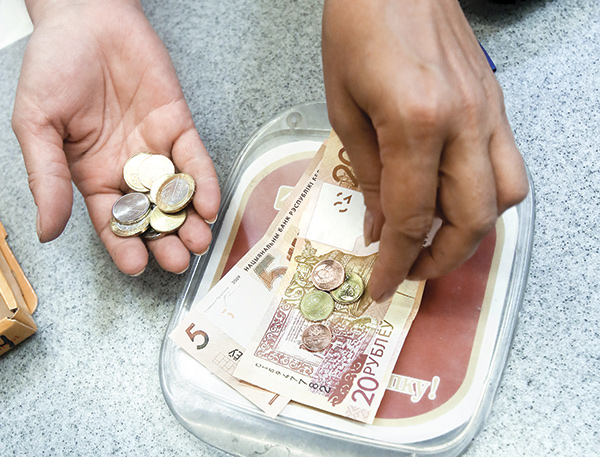
Meanwhile, the major advantage for the state is a significant reduction in the cost of money circulation. Banknotes degrade during usage, necessitating replacement. Those of small value (100 and 500 Roubles) deteriorate rapidly, lasting only about six months. Once coins are introduced, the cost of printing of this ‘small’ money will fall drastically.
“The key message of the state — which initiated this denomination — is that consumer market prices will stop rising at the same great pace as before in Belarus,” comments Prof. Mikhail Kovalev, of the Belarusian State University’s Economic Department. “Ideally, annual inflation growth (under similar reforms) should be no more than 3-5 percent. We’ve seen slightly higher figures but, evidently, this parameter should receive increased attention in coming years. Matters of primary and secondary significance must be distinguished. The National Bank considers that the renewal of money will stop inflation and by 2020 inflation should reach 5 percent (from around 12 percent at present).
Valery Borodenya, a member of the Standing Committee of the National Assembly’s House of Representatives, agrees, saying that this is the ideal time for the denomination. “As the National Bank has recently admitted, denomination was planned for 2009 but the 2008 crisis changed its plans. The economy was then swirling for several years but the time to act has now come, as inflation is falling and anti-monopoly legislation is being optimised. Prices are rounding as a result of the financial reform, but may go either up or down. The President spoke of the matter seriously recently, noting that the state will attentively follow price growth.
The denomination could entail some problems — such as queues in shops and at agencies rendering services, as well as at desks selling transport tickets. Criminals could also become more active. Accordingly, it’s better not to exchange money with individuals and it’s necessary to be more attentive when paying for goods and services. In this respect, the National Bank’s advice to learn to manage your finances is timely.
Acute question
Places to exchange old banknotes for new
The denomination was launched on July 1st, at a ratio of 10,000:1. Old and new money will simultaneously circulate till the end of 2016, and old banknotes will become invalid only in 2022. From January 1st, 2017 to December 31st, 2019, old money may be exchanged at any Belarusian bank. Over the following two years, this service will only be rendered by the National Bank (and its regional branches). Anyone wishing to exchange a sum equal to or exceeding 1,000 basic values will need to show a passport.
Pages of history
Denomination in the USSR and Belarus: when and how it happened
1947 Wartime rationing system was discontinued and old treasury notes were exchanged for new ones at a rate of 10:1. Savings banks exchanged amounts of up to 3,000 Roubles at a special fair rate of one to one and larger amounts were exchanged with a reduction factor. Old banknotes lost their value after December 29th (conversion began on December 16th). The exchange did not affect coins.
1961 The exchange rate stood at ten to one but did not affect 1, 2 or 3 Kopeck coins, which remained in circulation. In fact, the value of copper coins increased a hundredfold over a 13 year period. The exchange of coins in denomination of 5, 10, 15 and 20 Kopecks was done in the same way as with paper money. The US dollar was worth 4 Roubles before the reform and 90 Kopecks afterwards.
1991 100 and 50 Rouble banknotes were exchanged, with the official reason given as ‘unearned income and counterfeit money control’. However, the ‘Pavlov reform’, initiated by Minister of Finance Valentin Pavlov, had a more pragmatic goal, of eliminating the emerging gap between the richest and poorest social groups. Restrictions on exchange were harsh, with citizens only able to exchange 1,000 Roubles each, within a three day period, from January 23rd-25th. Individual withdrawals from Sberbank were also limited and could not exceed 500 Roubles per citizen per month.
1994 Back in 1992, new banknotes depicting animals were introduced in Belarus: the famous ‘zaichik’ (hare), squirrel, beaver, lynx, wolf and bison. However, while the new banknotes were being printed, inflation led to rapid price increases, and it was decided to increase the denomination of the new banknotes by adding an imaginary zero to the figure on the bill. The ‘zaichik’, denoted as ‘1 Rouble’ became worth ten. Later, in 1994, the imaginary zero was removed, and prices for goods and services were recalculated.
2000 Inflation continued, with Belarusians becoming ‘millionaires’. By 1999, a banknote with a face value of 5 million Roubles was in circulation and it was decided to lose three more zeros.
By Alexander Benkovsky











